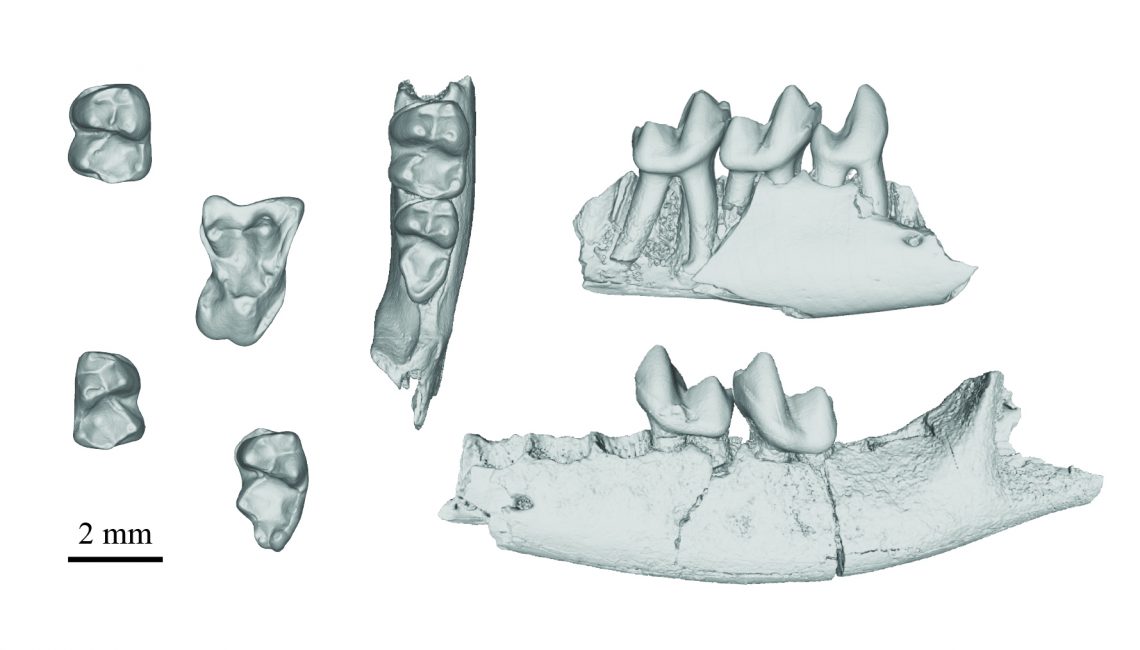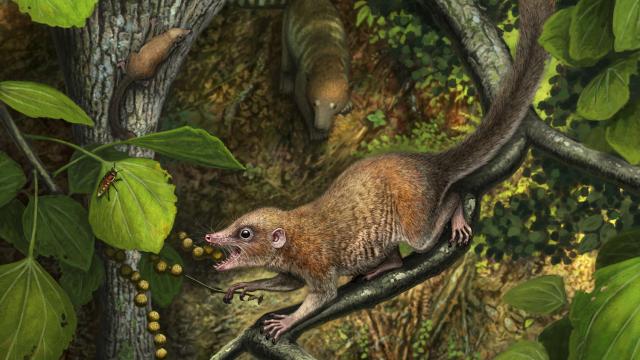A formation famous for producing T. rex fossils has now yielded the oldest evidence of primates in the fossil record, in what is being hailed a significant discovery.
Jawbones and an assortment of teeth found in the Hell’s Creek formation of northeastern Montana are the oldest primate fossils ever discovered, according to new research published in Royal Society Open Science.
Dating back to around 65.9 million years ago, these animals lived a mere 105,000 to 139,000 years after the Cretaceous–Paleogene extinction event, in which an asteroid wiped out most plant and animal species on Earth. The new paper was co-led by Gregory Wilson Mantilla from the University of Washington and Stephen Chester of Brooklyn College and the City University of New York.
“This is an important study because it documents the earliest primates ever discovered, pushing back the date of the oldest primates to the earliest Paleocene, in addition to establishing greater diversity as well,” Eric Sargis, a professor of anthropology at Yale University who’s not affiliated with the new study, said in an email.
Indeed, the age of these fossils is significant, as it suggests the ancestor of all primates, both extinct and extant, lived during the Mesozoic, specifically the Late Cretaceous. Prior to this discovery, the oldest evidence of stem, or early, primates in the fossil record dated back to the first 300,000 to 500,000 years of the Paleocene (the epoch that followed the Mesozoic).

The newly discovered teeth and jawbones belong to two different species: P. janisae and P. mckeeveri. Both species belong to Purgatorius, the oldest known genus associated with primates. Other members of this group include P. unio and P. ceratops, and they’re all considered plesiadapiforms — a stem group of primates that includes Purgatorius and from which all modern primates like monkeys, apes (you included), and lemurs are descended.
P. janisae was already known to paleontologists, but P. mckeeveri is a newly described species named in honour of a family that has supported fieldwork in this area. Three teeth with traits not seen before in Purgatorius allowed the scientists to declare the discovery of a new species.
The team studied these extinct creatures by poring over a large collection of fossils at the University of California Museum of Paleontology, which hosts the largest collection of P. janisae fossils. They also had epoxy casts of other Purgatorius fossils to work with, as well as enlarged 3D models printed from microCT scans. The team also used a technique called “geometric morphometrics” to digitize and compare features of fossils to other known species.
“This work was done with a large team that brought distinct and critical skill sets to this research, from the geochronologists who were able to bracket the age of these fossils to the geologists who were able to decipher how these fossils were deposited,” said Mantilla in an email. “We also could not have done this work without the help of generous colleagues at the museums that we worked [with] and the land owners in Garfield County Montana that allowed us to work on their land. It was a large team effort.”
Scientists don’t yet know the exact timeframe for the emergence of Purgatorius, but the “fact that there are two species” that appeared so soon after the mass extinction “implies that their ancestor was older than the two descendant species,” wrote Mantilla. It’s becoming increasingly more likely that the ancestor of plesiadapiforms “first arose in the Late Cretaceous rather than in the Paleocene,” he said, meaning the earliest proto-primates would have rubbed elbows with the dinosaurs.
As for the forerunner to Purgatorius, that’s still a mystery. As Mantilla explained, some North American fossil species dating back to the Late Cretaceous have been proposed as being ancestral to Purgatorius, including the rat-like Gypsonictops. It’s probably more likely that “we haven’t found the ancestor in the fossil record yet,” he added.
These tiny placental mammals were very squirrel-like in appearance, but Purgatorius, like other plesiadapiforms, “share dental features with other primates,” said Sargis, adding that their teeth were “primate-like, not rodent-like.”
And as the new study shows, they were among the first mammals to succeed in the Paleocene, appearing “shortly after the catastrophe that wiped out non-avian dinosaurs,” explained Mantilla. “They had a couple of adaptations that allowed them to prosper in the wake of this disaster. First, they were arboreal — they spent most of their time up in the trees — and second, they had teeth that allowed them to feed on fruit and insects.”
These traits, it would seem, allowed Purgatorius to “grow and become a major part of the terrestrial ecosystem within one million years following the mass extinction event,” he added.
Mammals first appeared during the Late Triassic, some 300 million years ago (we’ve been around for a while!). That primates were able to thrive after the extinction of non-avian dinosaurs is not a huge surprise. Indeed, mammals quickly took over once the terrible lizards were gone, giving rise to the Age of Mammals approximately 10 million years after the Cretaceous–Paleogene extinction event.
After living in the shadows of dinosaurs for hundreds of thousands of years, our time had finally come.
